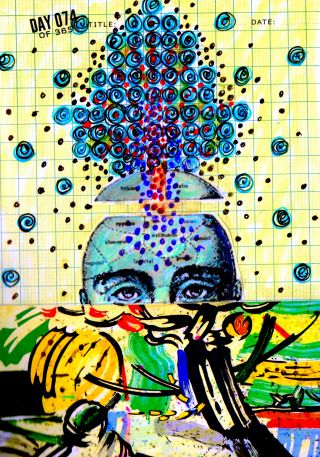 In working with survivors of acute and repeated traumatic events over the last several decades, I am always particularly conscious of individuals’ self-regulating capacities initially and throughout our work together. Self-regulation is currently a ubiquitous term used to describe not only the capacity to control one’s impulses, but also to be able to soothe and calm the body’s reactions to stress. It is the ability to modulate affective, sensory and somatic responses that impact all functioning including emotions and cognition. It also refers to the brain’s executive function to control impulses, delay actions if necessary and initiate them if necessary, even if one does not want to.
In working with survivors of acute and repeated traumatic events over the last several decades, I am always particularly conscious of individuals’ self-regulating capacities initially and throughout our work together. Self-regulation is currently a ubiquitous term used to describe not only the capacity to control one’s impulses, but also to be able to soothe and calm the body’s reactions to stress. It is the ability to modulate affective, sensory and somatic responses that impact all functioning including emotions and cognition. It also refers to the brain’s executive function to control impulses, delay actions if necessary and initiate them if necessary, even if one does not want to.
Process of reparation
By the simplest definition, bilateral simply means “involving two sides.” Sensory integration is often associated with bilateral techniques that assist individuals in organizing specific sensations via methods found in occupational therapy. In the process of reparation from psychological trauma, various forms of bilateral stimulation or movement seem to be effective in engaging cross-hemisphere activity in the brain (Shapiro, 2001) and in art therapy possibly because it reconnects “thinking” and “feeling” (Malchiodi, 2003/2011) via the sensory-based processes involved in art making. These applications seem to have an impact on recovery from traumatic events because for many individuals, the limbic system and right hemisphere of the brain are hyperactivated by actual experiences or memories of trauma. In brief, specific processes found in bilateral stimulation may help regulate body and mind thus allowing explicit memory to be reconnected with implicit memory.
Bilateral drawing
Bilateral drawing is a deceptively simple art-based activity that has been around since at least the 1950s that capitalizes on self-regulating properties similar to rocking, walking, cycling or drumming. Some art therapy practitioners refer to bilateral drawing as “scribbling with both hands” because the intent is not necessarily to make a specific image, but to instead just engage both hands in spontaneous drawing with chalks, pastels or other easily manipulated art materials. Like many art and expressive arts therapists, I have used this activity for several decades and actually learned it during college art courses as a way of “loosening up” before beginning to draw or paint. Florence Cane (1951) is one of many early art therapy practitioners who observed a connection between free-form gestural drawing on paper, the kinesthetic sense involved in movement, and the embodied qualities of the experience. In her work with children and adults in the mid-20th century,
Large swinging gestures
Cane hypothesized that it is important to engage individuals through movements that go beyond the use of the hands to engage the whole body in natural rhythms. In particular, she refers to large swinging gestures that come from the shoulder, elbow or wrist to not only liberate creative expression, but also act in a restorative capacity to support healthy rhythms in the body and mind. In other words, these rhythmic movements can be practiced in the air and then later transferring them to paper with drawing materials.
Pour joindre l’article, cliquez sur le dessin

Laisser un commentaire